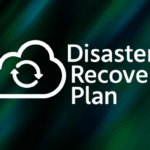Waitlists look simple on the surface, yet every phone number and timestamp becomes a liability if handled loosely. Strong privacy practice turns a basic queue into a trustworthy bridge between demand and seats. The goal is not to hoard information. The goal is to capture only what operations need, store it securely, and prove that access is controlled.
Choice of tooling sets the tone. Selecting an online waitlist tool that supports consent prompts, field controls, and automatic retention limits makes privacy operational rather than aspirational. With guardrails in place, teams collect just enough to seat guests quickly, send timely updates, and keep records that satisfy audits without bloating risk.
Data Minimization Starts At The Door
Every extra field increases exposure without necessarily improving service. A clear schema keeps the collection lean. Name or party label, party size, contact method, and timing are often sufficient for most casual venues. Allergy flags can be helpful, yet storing detailed health data rarely adds value for a queue and should be avoided. When optional notes exist, default them to blank and resist vague “just in case” entries.
What To Collect And What To Skip
- Essentials only
First name or alias, party size, contact channel, and arrival time to manage estimates and notifications. - One reliable contact
Phone or email, not both by default, with a visible opt-in for messaging and clear language about purpose. - Short-lived notes
Simple tags like high chair or patio preferred, with automatic expiry after the visit. - No sensitive categories
Avoid full names, birth dates, ID numbers, or medical specifics that are not required to honor safety needs. - Transparent consent
Plain-text notice on why data is collected and how long it stays, plus an easy way to opt out.
These choices lower legal exposure and reduce training friction. Staff moves faster when fields are few and clear. Guests trust the process when it does not pry. Minimization also shrinks the blast radius if a device is lost or an export goes astray, which directly protects brand equity.
Storage And Access That Hold Up Under Audits
Security is less about slogans and more about quiet routines. Data at rest should be encrypted, and transport should use TLS. Role-based access ensures hosts can manage today’s list while administrators handle settings and retention. Shared accounts weaken accountability, so unique logins with multi-factor authentication are worth the small setup effort. Logs that record who viewed or edited entries create the evidence line regulators expect and insurers respect.
Backups deserve attention. Snapshots should be encrypted, separated from production, and subject to the same retention schedule as live records. Disaster recovery plans need realistic targets for recovery time and data loss. A short tabletop exercise exposes missing contact trees or unclear responsibilities before chaos arrives.
Access Control And Storage Checklist
- Least privilege by design
Roles grant only what each function needs, with quick revocation for departures and seasonal hires. - Strong authentication
Unique accounts, multi-factor options, and session timeouts that reflect the risk level of the venue. - Clear retention windows
Default deletion of waitlist entries within days or weeks, with documented exceptions for disputes. - Tamper-evident logs
Immutable records for creation, edits, exports, and deletions, reviewed on a recurring schedule. - Secure exports
Password-protected files, time-limited links, and a register of who received data and why.
Following this checklist turns policies into muscle memory. New hires learn a simple pattern instead of a complex theory. When an auditor asks for proof, the system answers with timestamps rather than stories. That confidence shortens audits and keeps attention where it belongs, on service quality.
Rights, Transparency, And Vendor Discipline
Privacy laws vary, yet most share the same spirit. Guests should know what is collected, how it is used, and how to request deletion. A small venue does not need an army of lawyers to honor these basics. A concise privacy notice on the waitlist page, a contact address for requests, and a documented process for fulfilling them covers the core. Training scripts help staff respond consistently to questions at the door without escalating tension.
Vendor selection is part of compliance. Contracts should specify where data resides, which subprocessors touch it, and how incidents are reported. Breach notification timelines, support hours, and data export rights need plain language. If a provider goes offline, operations should fall back to a minimal paper or offline list without capturing more data than necessary. Paying attention to these boring details prevents expensive surprises.
Continuous Improvement Without Bloat
Metrics keep the program honest. Track average fields per entry, deletion rates within the retention window, and export frequency by role. If numbers creep upward, simplify templates and re-train. Pair these privacy metrics with service outcomes like estimated wait accuracy and message deliverability to show that minimal data still delivers smooth operations.
In the end, a privacy-first waitlist is a service advantage, not a constraint. Fewer fields mean faster queues. Short retention means smaller targets for attackers. Clear access rules mean fewer mistakes and cleaner audits. With a disciplined schema, secure storage, and respectful transparency, a venue can seat more guests with less risk while projecting the kind of trust that keeps people returning.


